The Mercury Avator series of outboards were launched at the Consumer Electronics Show in January of 2023, and anglers, hunters, and other boaters are embracing the benefits of the new easy-to-use electric outboards. This revolutionary lineup of electric outboards is fueled by quick-change Lithium-Ion battery packs, eliminating some of the hassles associated with gas. The electric motors at the heart of these outboards are capable of incredible torque, which allows them to produce serious power from a tiny package.
Wired2Fish recently got its hands on one of these high-tech, cutting-edge outboards, the Avator 7.5e model, and mounted it on a small TRACKER Grizzly jon boat for a week. We found that it did everything a traditional gas motor can do, but with absolutely no noise.
Recent technological advances allow the 7.5e to pack all the juice it needs into a tidy, self-contained battery pack that can be easily swapped for a fully charged battery if needed. Electric outboards like the Avator will not replace gas motors for all uses, but they add a new dimension to fishing, hunting, and family fun — and there are definitely a wide range of use cases in which an electric outboard would not only be equal, but preferable to a gas motor.
We’re going to get into the nitty gritty of the Mercury Avator 7.5e and all its features, but first, for some context, let’s take a little look at the history of electric motors for small watercraft.
Mercury Avator 7.5e Features and Specs
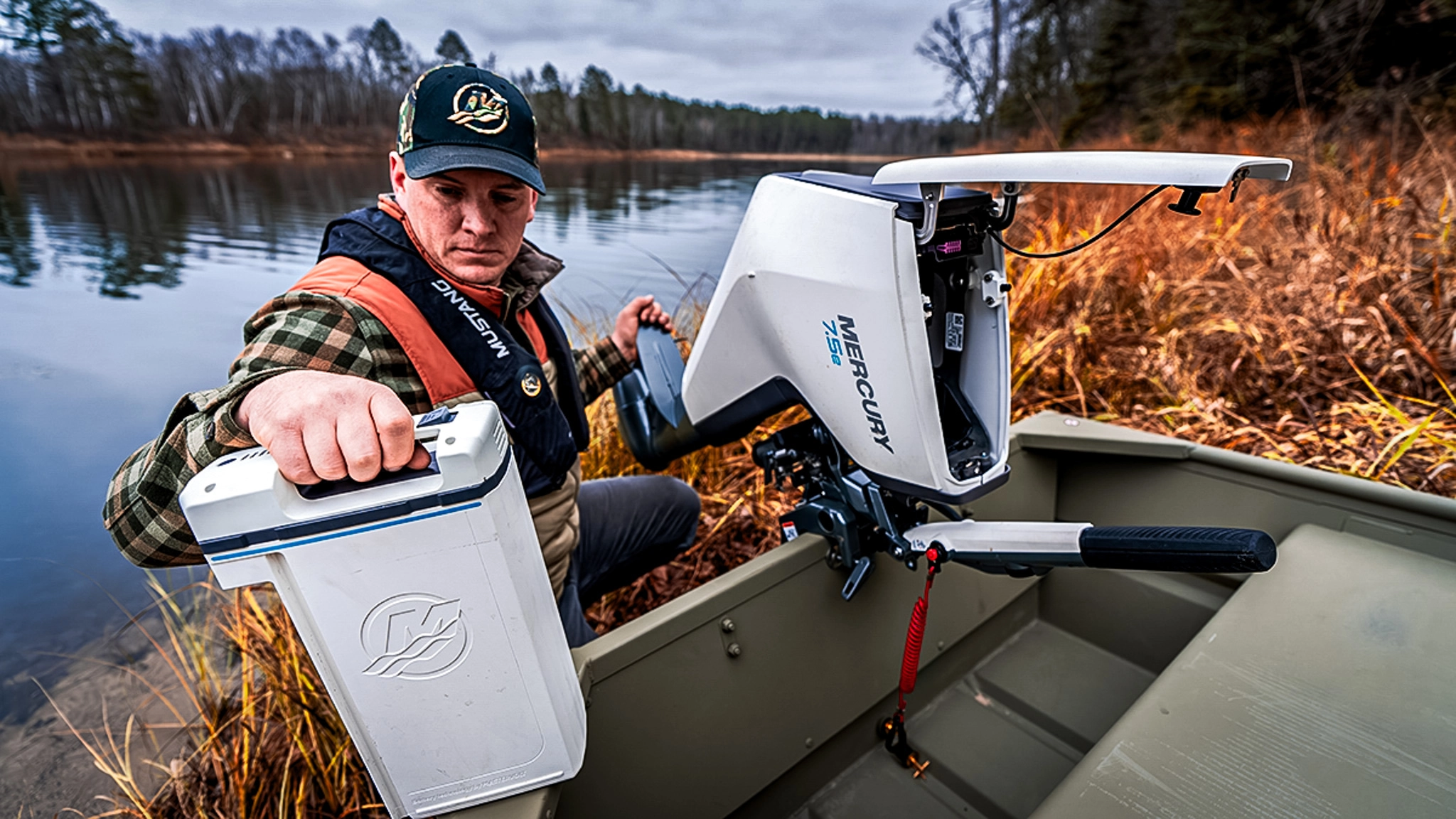
Quick-Connect Battery: The 1 kWh lithium-ion battery has no cables to connect. It slides into place under the flip-up top cowl, saving you valuable space within the boat. Spare batteries can be swapped into place in seconds, providing greater range.
Transverse Flux Motor: The industry-first transverse flux motor generates high torque with little effort, for quick acceleration.
Multi-Purpose Tiller Handle: The Mercury Avator tiller was designed to let anyone take the helm with confidence. It adjusts up, down, left or right for comfortable steering from any position or with either hand, and it folds down to become a convenient carrying handle.
High-Efficiency Prop: Available in three pitches, the Avator prop is crafted of a high-strength, impact-resistant composite material. Its three-blade design is optimized for efficiency to help extend battery life.
Digital Controls: For console boats, digital remote controls deliver instant responsiveness, with no hesitation. Controls are available in three styles to fit a range of center- and side-console mounting positions.
Range: Based on testing with a 13-foot (382-pound dry weight) boat, the Mercury Avator 7.5e electric outboard can run for 60 minutes, or 5 miles, at constant full throttle, with one fully charged 1kWh battery, and up to 19 hours, or 34 miles, at constant 25% throttle.

Battery: Integrated 1030Wh
Battery IP Rating: IP67
Battery Type: Li-Ion
Battery Weight: 17 pounds
Charger (Standard): 230w
Input Power: 890W
Rated Prop Shaft Power: 750W
Rated Voltage: 48
Shaft length: 15\ / 381 mm, 20\ / 508 mm, 25\ / 635 mm
Standard Propeller: 12.7 in x 7 pitch
Steering: RC / Tiller
Total Weight (Excluding Battery & Transom Bracket): 37 pounds
Total Weight Excluding Battery: 43 pounds
History of Electric Boat Motors
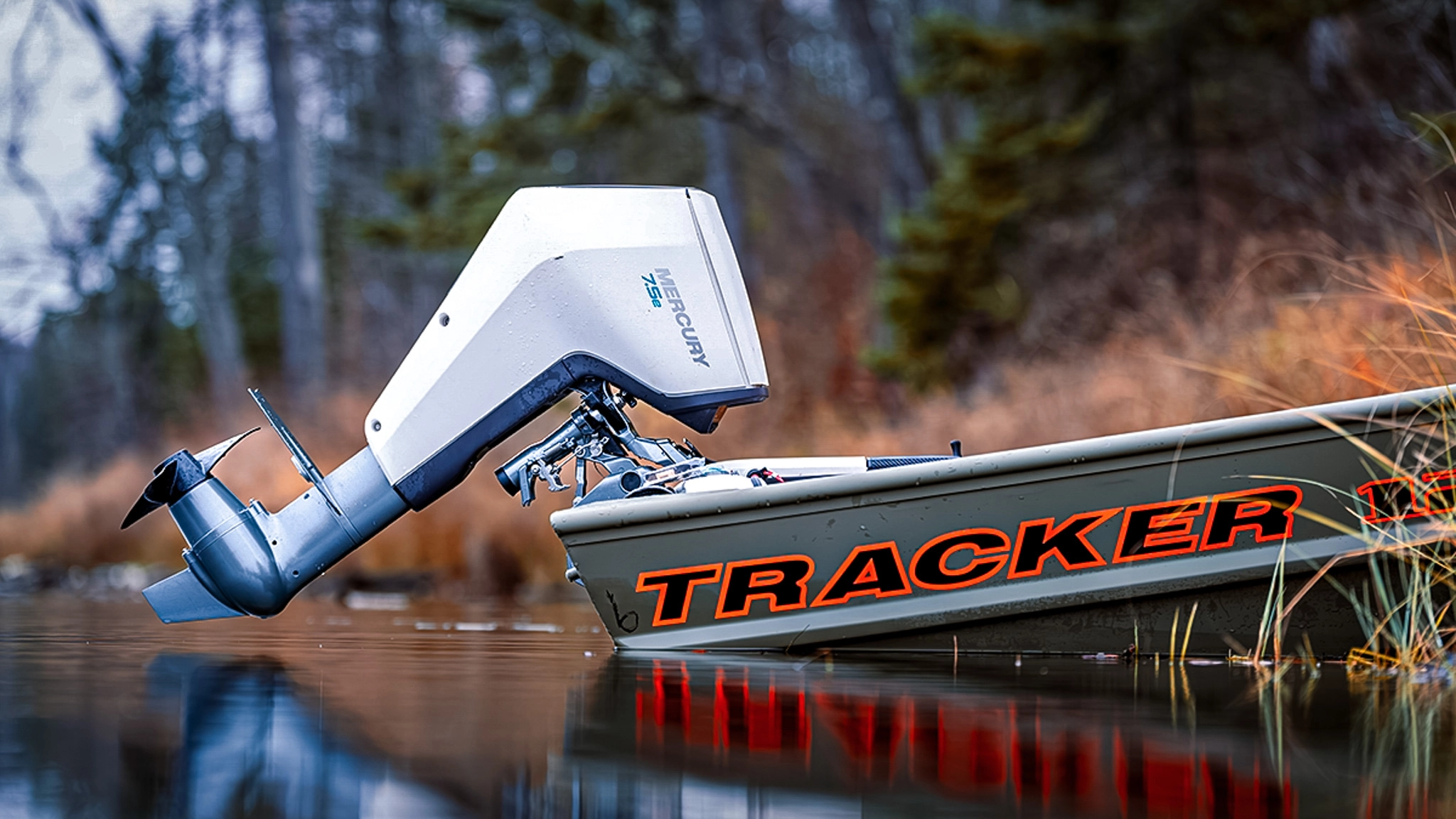
Anyone who has done any amount of bass fishing knows their way around an electric trolling motor. They exist so anglers can sneak through and around structure and cover smoothly and quietly, with the primary propulsion being provided by a significantly larger, more efficient gas-powered motor that can cover greater distances at speed.
Electric outboards simply take this idea a step further by making an electric motor the primary propulsion system. To equal this capability, electric outboards have been quite large to pack enough battery life to be practical. That’s right, electric outboard motors for boats are not nearly a new idea or product. There are a number of companies that produce them today — and they’re getting smaller and smaller.
Morton Ray, founder of Ray Electric Outboards, produced some of the first practical modern electric outboards more than 50 years ago, back in 1973. His motors were similar in appearance to conventional gas outboards, housing the direct current powerhead in a cowling on top and transferring the energy through a midsection and out through a “lower unit” to a propeller.
That configuration is the exception to the rule, with most manufacturers placing the electric motor where the lower unit would be in a conventional outboard, resulting in simpler designs with a waterproof housing holding the motor and a direct-drive shaft turning the prop.
But the history of electric boat motors goes back much further, all the way to 1830s Germany.
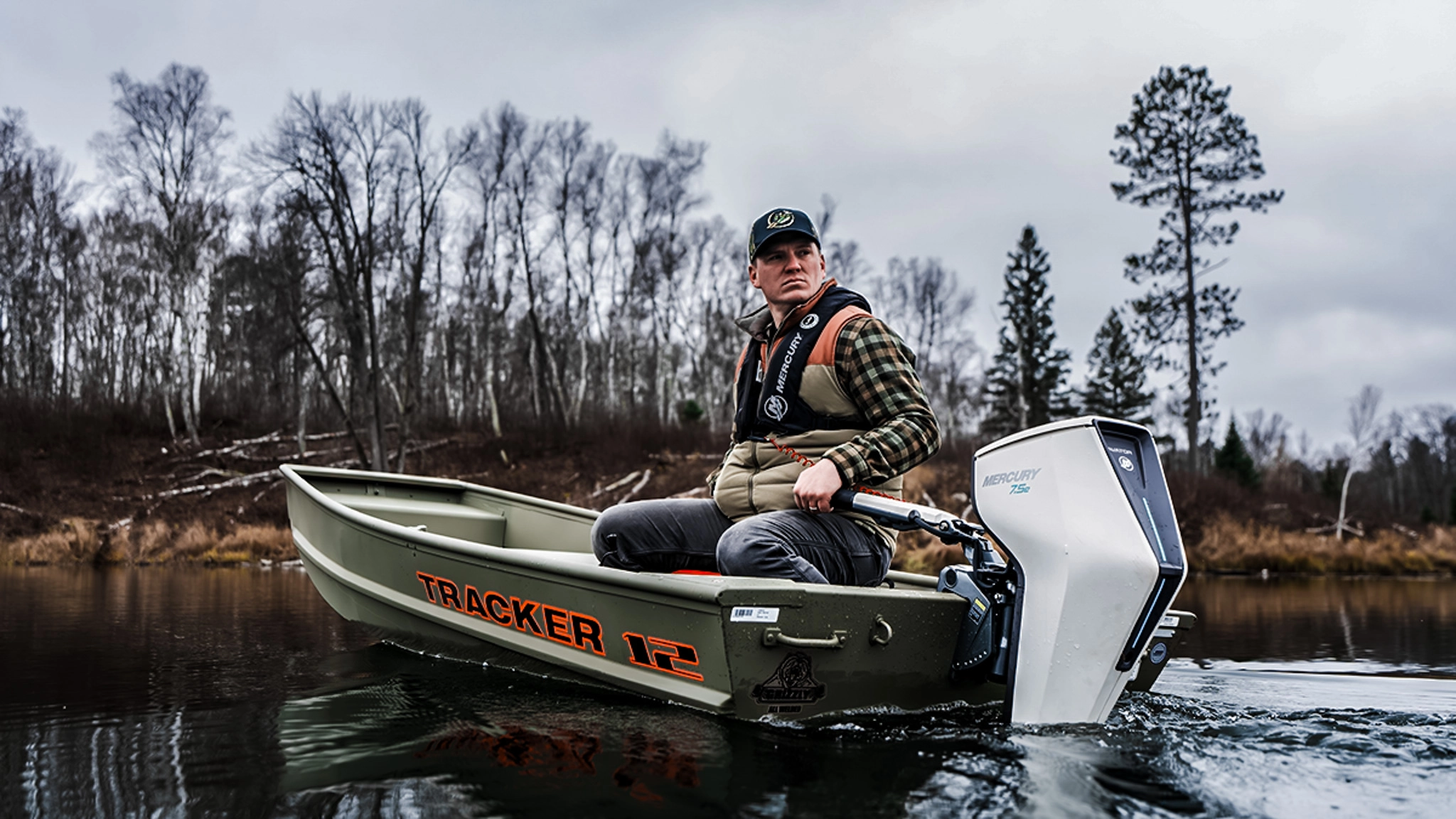
The earliest electric boat motors were the brainchild of German inventor Moritz von Jacobi. He created an electrically powered 24-foot boat capable of carrying 14 passengers was supposedly demonstrated on the Neva River in Saint Petersburg, Russia, in 1839. The vessel had a reported speed of 3 mph — that’s 2.6 knots.
A small electric motor was patented by French electrical engineer Gustave Trouvé in 1880, and ushered in an era of electric power for water vessels. By 1882, commercial launches were taking passengers up and down England’s Thames River. In 1893, a fleet of 55 electric-powered launches ferried attendees at the Chicago World’s Fair, putting the technology on display on the world’s stage. It’s estimated that these electric boats ferried up to a million passengers during the fair.
Electric power was much easier to harness than steam, especially for smaller vessels, so it dominated the water until the proliferation of the gasoline outboard around 1920. The storage capacity of onboard fuel tanks exceeded what the batteries of the time were capable of, so it made sense that gas engines took over. But electric power never completely went away on the water, with a handful of commercial electric boats in service, mostly scattered throughout Europe.
And now, in the 2020s, that capability ratio is swinging the other way.
Pros and Cons of Electric Outboards

Of course, the military has always seen and exploited the advantages of electric motors on the water, from quiet electric outboards for small, stealthy craft to the massive batteries charged by diesel engines that provided power to submarine props for silent running in WWII (since the 1950s, electric sub motors have been powered by nuclear reactors.
And that’s also the biggest check mark in the pros column for electric outboards: their silence. Modern four-stroke gas engines are certainly quieter than outboards from the old days, but they still make a good bit of noise, especially when you pour the coals on. Since there’s no internal combustion happening, electric outboards are, for all intents and purposes, silent.
Then there’s all the maintenance that you don’t have to do if you own an electric outboard. Unlike a gas motor, you don’t need to change the oil every 100 hours. You don’t need to change lower unit oil either, or worry about water pumps. Electric motors don’t have any of that.
No gas also means there’s no potential for spills, and no exhaust fumes. It also means no trips to the filling station either, which saves some money. Industry estimates put the cost of a typical charge for a 36-volt battery somewhere in the neighborhood of a buck, which is much less than you’ll pay for a gallon of gas.
Disadvantages
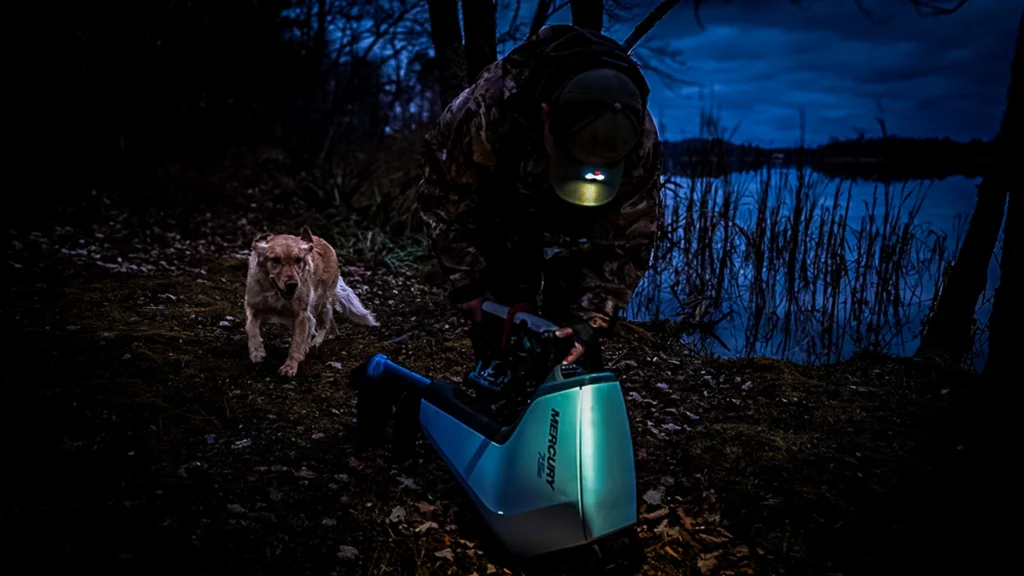
There’s no getting around it: You need to charge batteries for them to continue to power a motor, which leads us to the same disadvantage shared by all battery-powered electric vehicles:
It takes WAY longer to charge a battery than it does to fill a gas tank.
Getting a full charge can take anywhere from a couple of hours to overnight depending on the size of the battery and the state of discharge. And to charge a battery of that size, you have to be on the power grid or at least hooked up to a generator.
That means, if you’re really out there in the woods, it’s probably easier to run a gas motor and stow a few jerry cans.
However, the solution to this problem for all battery devices has been and continues to be relatively simple: have backup batteries on hand. Motors like the Mercury Avator that feature easily removable batteries that can be quickly and easily swapped take full advantage of this. After all, if you’re willing and able to haul jerry cans of gas with you to the backcountry, you can haul a few spare batteries instead.
A Week with the Mercury Avator 7.5e
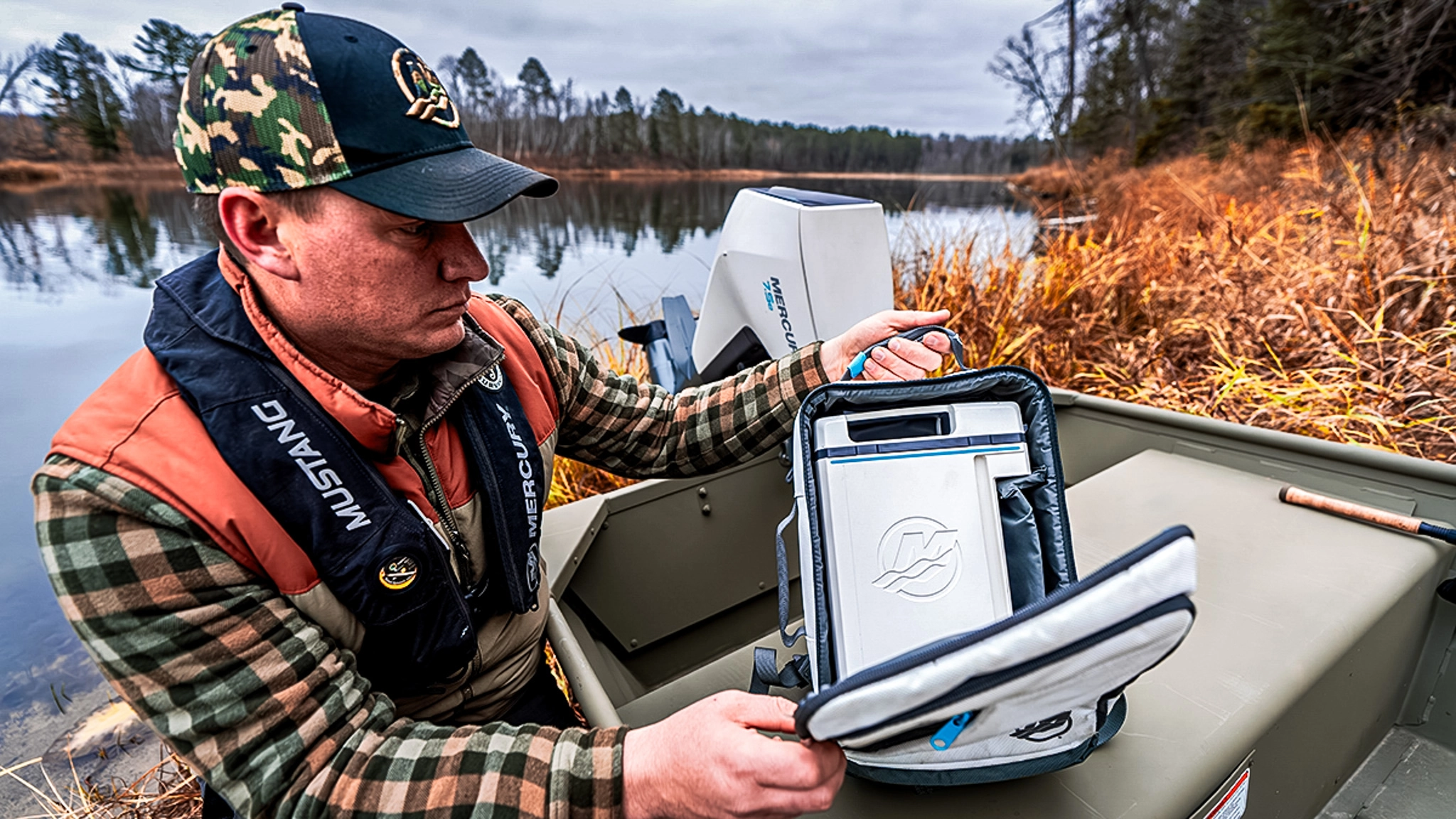
The Mercury Avator is really simple to operate with a really low intimidation factor, which could be beneficial for new anglers or just people new to boating. There’s no motor that has to be started and kept running. Just hit the throttle and go. And the hype is true, the motor runs whisper quiet and it’s plenty powerful.
Operation is simple, but how about mounting and charging? The setup is the same as it would be for any small outboard motor: super simple. Fasten it to the stern, drop a battery in, and away you go.
The charging system is equally simple. You just remove the battery from the motor and plug it into a standard household outlet, just like a phone. The included 110W Avator smart charger constantly monitors voltage and current so the battery receives a safe and effective charge. Plus, the charger is very portable. There’s also a higher-speed charger available as an upgrade.
This is a fantastic beginner motor for new boaters and anyone who wants to get out on the water but doesn’t have very much experience. It’s also great for places where boat motor noise can rile up the locals (or spook fish and game) or genuinely disturb people.
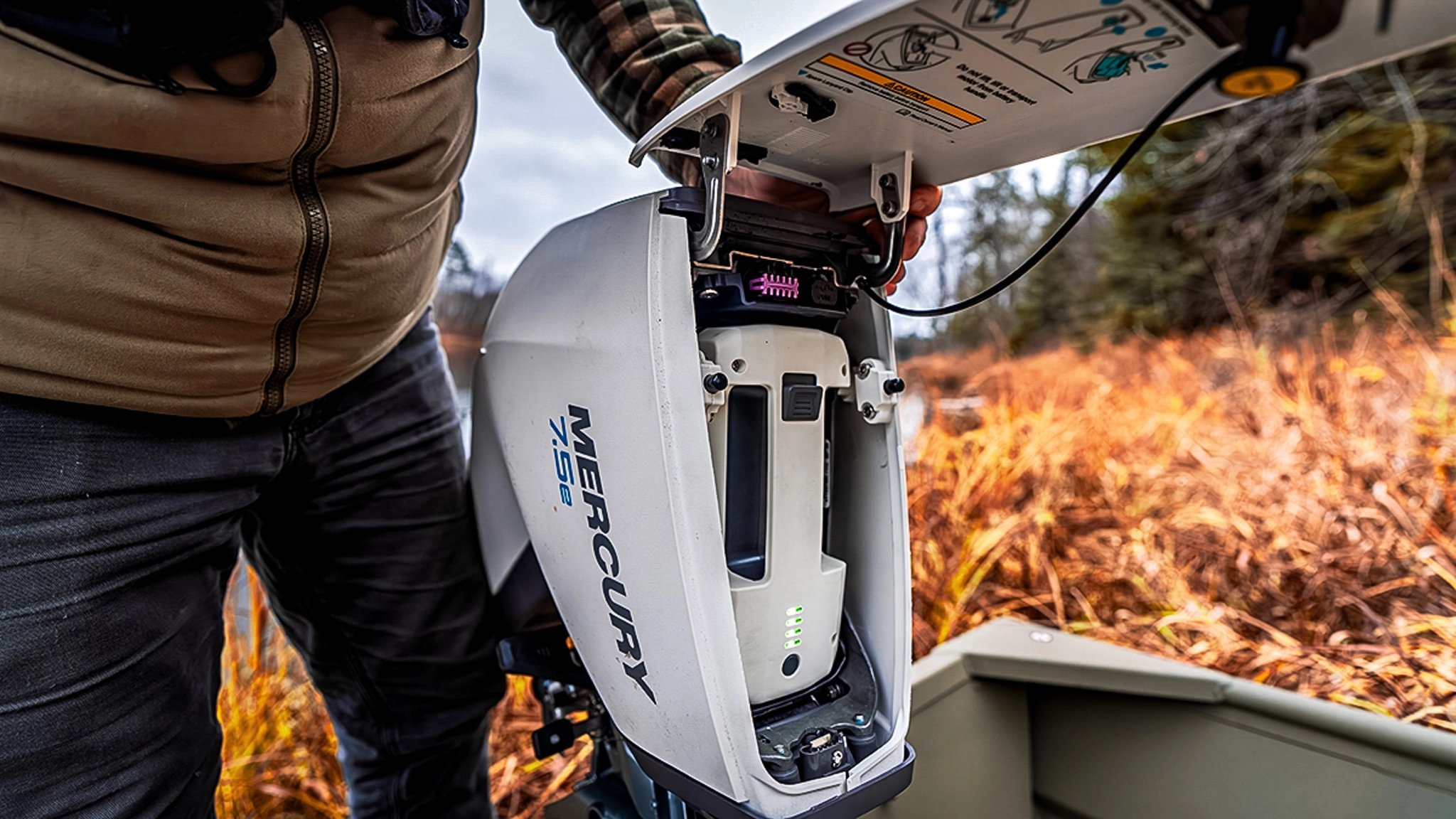
Now the big question is, what’s the range like? The answer, of course, will determine the best use cases for this kind of motor. The problem is, the range will change quite a bit depending on the size of the vessel the motor is attached to.
Mercury has some numbers we can work with. Based on testing using a 13-foot 13-foot boat with a dry weight of 382 pounds, the Avator 7.5e outboard can run flat out for 60 minutes (or 5 miles) at constant full throttle on one fully charged battery. At 25% throttle, it can run for up to 19 hours (or 34 miles) on the same boat.
There’s a lot of technology packed into this motor that just adds to its convenience. The vivid full-color display right on the front lets you monitor the battery level, power, alerts, and remaining run time at a glance, so there’s no guessing. It provides a distance-to-empty estimate, which is informed by GPS data and real-time speed.
There are two models — the tiller model has the display integrated into the outboard. The remote models pair with a helm display for the same ease of use. The Avator lineup includes the 7.5e which we tested, and a number of larger models with more power. Those with boats larger than the TRACKER we used might want to look into the larger 20e, 35e, 75e and 110e, which increase thrust and range.
Final Thoughts

A few years ago, you might have laughed at the idea of an electric outboard. But after using one for a week, I believe there are plenty of times and places where this kind of motor would be more than enough with plenty of range and power. Electric power has been propelling golf carts for ages, and has worked its way into the outdoor space in the form of e-bikes and all the other vehicles hunters have been using to sneak into the backcountry without spooking deer, elk, or other critters. Out on the ice, you never hear the roar of a gas-powered auger anymore; they have all been replaced with quieter electric options.
Because it runs utterly silently, is extremely easy to use with a very low barrier to entry, it’s safe to say outboards like the Mercury Avator 7.5e will be a beckoning call to new and seasoned anglers alike who want to reach remote places without disturbing anyone or anything, and any one who wants to get on the water with a minimal learning curve. And the various sizes of motors in the Avator line are suited to a variety of hulls, so there’s probably one for whatever you fish or hunt out of.
There’s also the utility of being able to detach the motor and its components and stow them in a vehicle or larger vessel at any time. There’s no fuel, oil, or fumes to worry about, so it really is that easy. Mercury even includes a custom-fit outboard carrying bag that fits the 15-inch-shaft tiller model, chargers, a battery bag, and spare battery.
If any of those features and capabilities sound like they might enhance your fishing lifestyle or the caliber of your adventures on the water, then you might be one of the many who can take advantage of the new wave of electric outboards. The Avator 7.5e is available at Bass Pro Shops and participating Mercury Dealers.












